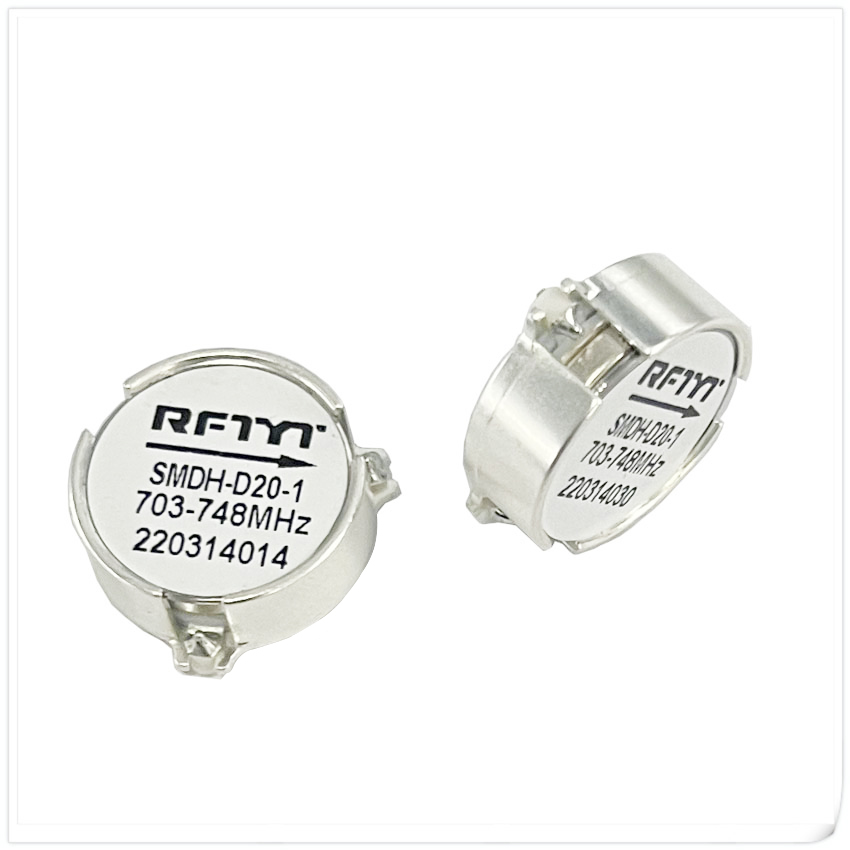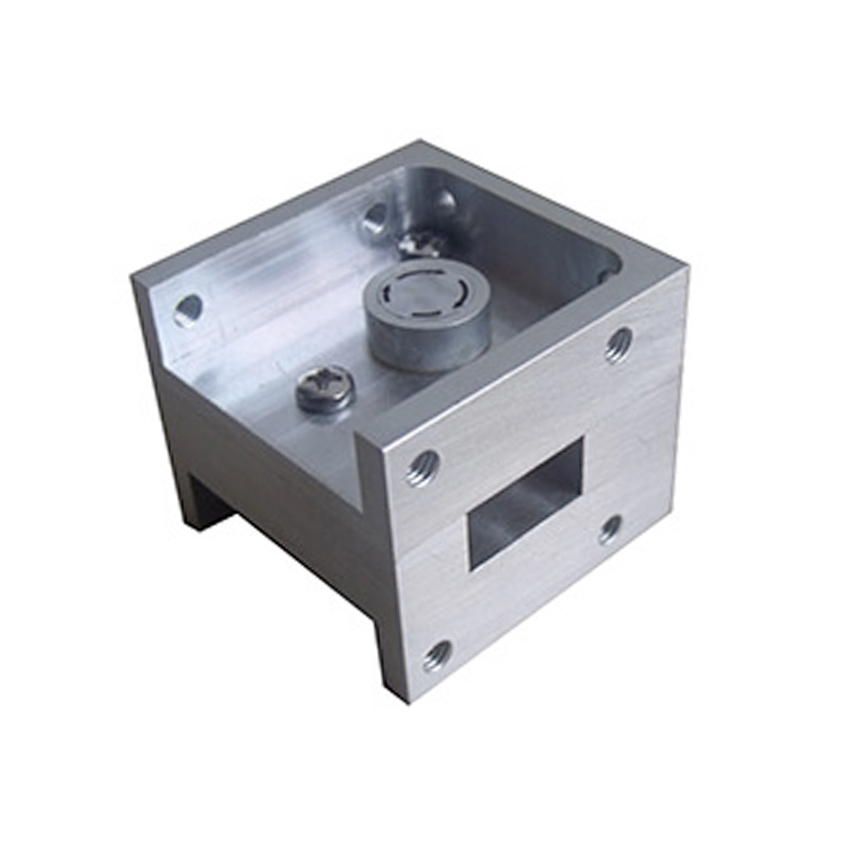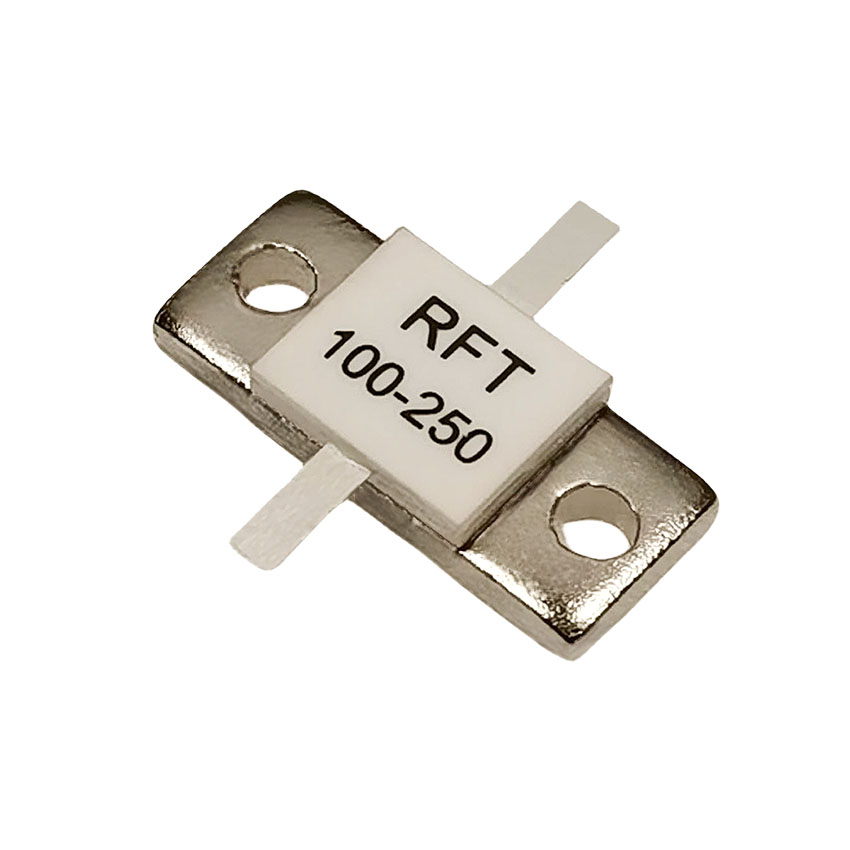-

Dual Junction Circulator
Double junction Circulator is a passive device commonly used in the microwave and millimeter wave frequency bands. It can be divided into dual junction coaxial circulators and dual junction embedded circulators. It can also be divided into four port double junction circulators and three port double junction circulators based on the number of ports. It is composed of a combination of two annular structures. Its insertion loss and isolation are usually twice that of a single Circulator. If the isolation degree of a single Circulator is 20dB, the isolation degree of a double junction Circulator can often reach 40dB. However, there is not much change in the port standing wave.Coaxial product connectors are generally SMA, N, 2.92, L29, or DIN types. Embedded products are connected using ribbon cables.
Frequency range 10MHz to 40GHz,up to 500W power.
Military, space and commercial applications.
Low insertion loss, high isolation, high power handling.
Custom design available upon request.
-

SMT Circulator
SMT surface mount Circulator is a type of ring-shaped device used for packaging and installation on a PCB (printed circuit board). They are widely used in communication systems, microwave equipment, radio equipment, and other fields. The SMD surface mount Circulator has the characteristics of being compact, lightweight, and easy to install, making it suitable for high-density integrated circuit applications. The following will provide a detailed introduction to the characteristics and applications of SMD surface mount Circulators.Firstly, the SMD surface mount Circulator has a wide range of frequency band coverage capabilities. They typically cover a wide frequency range, such as 400MHz-18GHz, to meet the frequency requirements of different applications. This extensive frequency band coverage capability enables SMD surface mount Circulators to perform excellently in multiple application scenarios.
Frequency range 200MHz to 15GHz.
Military, space and commercial applications.
Low insertion loss, high isolation, high power handling.
Custom design available upon request.
-

Drop in Isolator
The drop-in isolator is connected to the instrument equipment through strip line. Drop in isolator usually designed with small dimensions, it is easy to integrate into various devices and saves space. This miniaturized design makes drop in isolators suitable for applications with limited space.Drop in isolator could easy fixed on the PCB board by soldering which make it very convenient to use. The third port of the Drop-in isolator will be equipped with a chip attenuator to attenuate signal energy or chip termination to absorption signal energy. An Drop-in isolator is a protective device used in RF systems, whose main function is to transmit signals in a unidirectional manner to prevent antenna port signals from flowing back to the input (Tx) port.
Frequency range 10MHz to 40GHz,up to 2000W power.
Military, space and commercial applications.
Low insertion loss, high isolation, high power handling.
Custom design available upon request.
-

Waveguide Circulator
Waveguide Circulator is a passive device used in the RF and microwave frequency bands to achieve unidirectional transmission and isolation of signals. It has the characteristics of low insertion loss, high isolation, and broadband, and is widely used in communication, radar, antenna and other systems.The basic structure of a waveguide Circulator includes waveguide transmission lines and magnetic materials. A waveguide transmission line is a hollow metal pipeline through which signals are transmitted. Magnetic materials are usually ferrite materials placed at specific locations in waveguide transmission lines to achieve signal isolation.
Frequency range 5.4 to 110GHz.
Military, space and commercial applications.
Low insertion loss, high isolation, high power handling.
Custom design available upon request.
-

Flanged Resistor
Flanged resistor is one of the commonly used passive components in electronic circuits, which has the function of balancing the circuit.It achieves stable operation of the circuit by adjusting the resistance value in the circuit to achieve a balanced state of current or voltage. It plays an important role in electronic devices and communication systems.In a circuit, when the resistance value is imbalanced, there will be uneven distribution of current or voltage, leading to instability of the circuit. Flanged resistor can balance the distribution of current or voltage by adjusting the resistance in the circuit. The flange balance resistor adjusts the resistance value in the circuit to evenly distribute current or voltage in each branch, thus achieving balanced operation of the circuit.
-

Coaxial Fixed Termination (Dummy Load)
Coaxial loads are microwave passive single port devices widely used in microwave circuits and microwave equipment.The coaxial load is assembled by connectors, heat sinks, and built-in resistor chips. According to different frequencies and powers, connectors typically use types such as 2.92, SMA, N, DIN, 4.3-10, etc. The heat sink is designed with corresponding heat dissipation dimensions according to the heat dissipation requirements of different power sizes. The built-in chip adopts a single chip or multiple chipsets according to different frequency and power requirements.
Military, space and commercial applications.
Custom design available upon request.
-

Coaxial Low PIM Termination
Low intermodulation load is a type of coaxial load. The low intermodulation load is designed to solve the problem of passive intermodulation and improve communication quality and efficiency. At present, multi-channel signal transmission is widely used in communication equipment. However, the existing testing load is prone to interference from external conditions, resulting in poor test results. And low intermodulation loads can be used to solve this problem. In addition, it also has the following characteristics of coaxial loads.Coaxial loads are microwave passive single port devices widely used in microwave circuits and microwave equipment.
Military, space and commercial applications.
Custom design available upon request.
-

Band Pass Filter
A cavity duplexer is a special type of duplexer used in wireless communication systems to separate transmitted and received signals in the frequency domain. The cavity duplexer consists of a pair of resonant cavities, each specifically responsible for communication in one direction.
The working principle of a cavity duplexer is based on frequency selectivity, which uses a specific resonant cavity to selectively transmit signals within the frequency range. Specifically, when a signal is sent into a cavity duplexer, it is transmitted to a specific resonant cavity and amplified and transmitted at the resonant frequency of that cavity. At the same time, the received signal remains in another resonant cavity and will not be transmitted or interfered with.
Custom design available upon request.
-

Coaxial Fixed Attenuator
Coaxial attenuator is a device used to reduce the signal power in a coaxial transmission line. It is commonly used in electronic and communication systems to control signal strength, prevent signal distortion, and protect sensitive components from excessive power.
Coaxial attenuators are generally composed of connectors (usually using SMA, N, 4.30-10, DIN, etc.), attenuation chips or chipsets (can be divided into flange type: usually selected for use in lower frequency bands, rotary type can achieve higher frequencies) Heat sink (Due to the use of different power attenuation chipsets, the heat emitted cannot be dissipated by itself, so we need to add a larger heat dissipation area to the chipset.Using better heat dissipation materials can make the attenuator work more stably.)
Custom design available upon request.
-

Flanged Termination
Flanged terminations are installed at the end of a circuit, which absorb signals transmitted in the circuit and prevent signal reflection, thereby affecting the transmission quality of the circuit system.The flanged terminal is assembled by welding a single lead terminal resistor with flanges and patches. The flange size is usually designed based on the combination of installation holes and terminal resistance dimensions. Customization can also be made according to the customer’s usage requirements.
-

Microstrip Attenuator
Microstrip Attenuator is a device that plays a role in signal attenuation within the microwave frequency band. Making it into a fixed attenuator is widely used in fields such as microwave communication, radar systems, satellite communication, etc., providing controllable signal attenuation function for circuits.Microstrip Attenuator chips, unlike the commonly used patch attenuation chips, need to be assembled into a specific size air hood using coaxial connection to achieve signal attenuation from input to output.
Custom design available upon request.
-

Microstrip Circulator
Microstrip Circulator is a commonly used RF microwave device used for signal transmission and isolation in circuits. It uses thin film technology to create a circuit on top of a rotating magnetic ferrite, and then adds a magnetic field to achieve it. The installation of microstrip annular devices generally adopts the method of manual soldering or gold wire bonding with copper strips.The structure of microstrip circulators is very simple, compared to coaxial and embedded circulators. The most obvious difference is that there is no cavity, and the conductor of the microstrip Circulator is made by using a thin film process (vacuum sputtering) to create the designed pattern on the rotary ferrite. After electroplating, the produced conductor is attached to the rotary ferrite substrate. Attach a layer of insulating medium on top of the graph, and fix a magnetic field on the medium. With such a simple structure, a microstrip circulator has been fabricated.
Frequency range 2.7 to 40GHz.
Military, space and commercial applications.
Low insertion loss, high isolation, high power handling.
Custom design available upon request.





